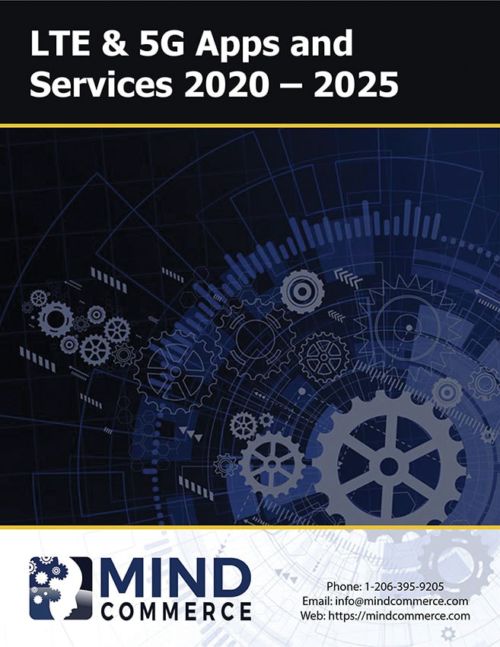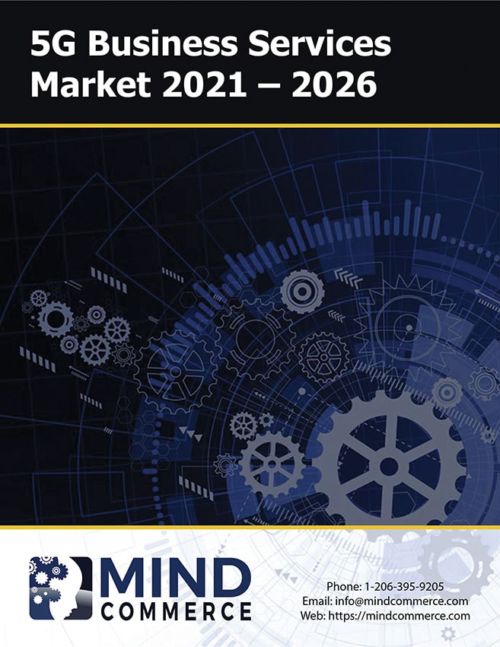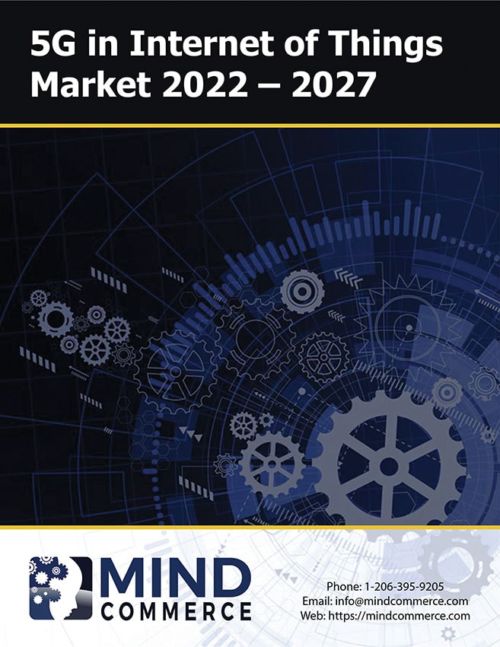ICT Infrastructure Components
ICT infrastructure is comprised of many components including switching, transmission/transport, signaling, network access (such as radio base stations), and various platforms, databases, and ICT data.
Some ICT infrastructure is general purpose in nature, such as transmission facilities necessary to carry broadband data traffic. Other ICT infrastructure components are purpose-built and intended for specific network needs such as platforms in support of Internet of Things (IoT) devices and applications.
Broadband Infrastructure and Services
 Broadband is the term used to refer to high capacity systems (transport and network access) capable of providing high bandwidth for telecommunications. Fixed broadband include fiber and cable systems and networks. Wireless broadband includes WiFi, WiMAX, and cellular broadband such as LTE, 5G, and 6G wireless.
Broadband is the term used to refer to high capacity systems (transport and network access) capable of providing high bandwidth for telecommunications. Fixed broadband include fiber and cable systems and networks. Wireless broadband includes WiFi, WiMAX, and cellular broadband such as LTE, 5G, and 6G wireless.
Mind Commerce covers these issues in its research practice such as:
- Network Slicing in 5G Networks
- Carrier WiFi and Small Cells in LTE and Beyond
- LTE in Industry Verticals: Market Opportunities and Forecasts
- 5G Planning, Strategy, and Market for Next Generation Apps and Services
- Mobile Value-added Services in 4G: Market Analysis and Forecasts for LTE-based VAS
- 5G in IoT by Connectivity, Infrastructure, Sensors, Devices (Type, Sector, Verticals), and Things
- 5G Market Assessment: Vendor Strategies, Technology and Infrastructure Outlook and Application Forecasts
- 5G and Mobile Edge Computing Marketplace: Technologies, Infrastructure, Ecosystem, Applications and Services
The above list is a representative sample as Mind Commerce offers many more broadband related reports.
ICT Switching, Signaling, and Platforms
Switching, signaling, network control and the overall systems for ICT service delivery has evolved significantly over the last decade. Historically, two of the most important areas for carrier infrastructure in recent years have been Service Delivery Platforms (SDP) and IP Multimedia Subsystem (IMS).
SDN represents a cost effective and flexible way for incumbent carriers to introduce new applications to networks.
IMS provides a framework for support of voice over LTE (VoLTE) call continuity (e.g. handover from VoLTE to 3G based voice) as well as the potential for next generation services. While the latter has not panned out as hoped, the former continues to be important for support of high definition voice services for network operators.
Mind Commerce ICT infrastructure reports addressing these areas include:
- Market Opportunity: Service Delivery Platforms
- Next Generation Messaging: Evolution to IMS and SIP
- IP Multimedia Subsystem: Driving New Business Models & Opportunities
- IP Multimedia Subsystem (IMS): The Market for Applications and Services
- Wireless Softswitch: Evolving the Core Network for Next Generation Wireless
- SIP Trunking: Next Generation Call Processing Drives Lower Cost Communications
- IP Multimedia Subsystem (IMS) Status Report: Emerging from the Trough of Disillusionment
- IP Multimedia Subsystem (IMS) Challenges and Opportunities in Multi-Application Environment
- Service Delivery Platforms: The SOA-enabled Path to Integrate Legacy and IMS Networks: Market
More recently, third-party provided and/or operated ICT platforms of various types have become very important for service creation, delivery, and support. ICT platforms often consist of hardware and software and are often used for a specific purpose such as IoT application and device management. Many of these platforms are operated by third-parties such as Over-the-Top (OTT) players.
Mind Commerce ICT infrastructure reports involving platforms for specific uses include:
- Global Cloud Computing: Infrastructure, Platforms, and Services
- Internet of Things (IoT) Platforms and Software: Market Outlook and Forecasts
- Global Cloud Computing Services, Platforms, Infrastructure and Everything as a Service (XaaS)
- Programmable Internet of Things (IoT): Market for IoT SDK, API, GUI, Platforms, and Open Source Software
- Integrated Workplace Management System Marketplace: IWMS Platforms, Software, and Solutions Market Outlook and Forecasts
ICT Infrastructure in Support of IoT
IoT requires many unique infrastructure components including sensors, communications modules, machine to machine (M2M) signaling, and platforms utilized for various purposes including application enablement, device management, and more.
For example, data management is a substantial area as IoT is anticipated to generate huge amount of data, much of which will be unstructured, requiring employment of big data analytics platforms.
Mind Commerce ICT infrastructure reports covering IoT include:
- Internet of Things WAN Market
- IoT Platforms, Data Management, and Analytics
- IoT Database Infrastructure and DB Services Market
- NFV in IoT: Technology, Market Assessment, and Forecasts
- Artificial Intelligence and Machine Learning in Big Data and IoT
- Sensors and Embedded Systems in IoT: Market Analysis and Forecasts
- M2M/IoT, Cloud, Big Data and Analytics: Market Dynamics and Opportunities
- IoT in Smart Infrastructure, Cities, and Buildings: Market Analysis and Forecasts
- Industrial IoT, Data Analytics, and Artificial Intelligence in Connected Manufacturing
The above list of Mind Commerce ICT infrastructure research in IoT is non-exhaustive as there are many additional reports.
ICT Operational Support Systems
 ICT Operational Support Systems (OSS) represent those systems and processes required to facilitate telecommunications and IT network operations, which include many aspects of provisioning and administration of telecom equipment, software, and data.
ICT Operational Support Systems (OSS) represent those systems and processes required to facilitate telecommunications and IT network operations, which include many aspects of provisioning and administration of telecom equipment, software, and data.
Provisioning ICT networks includes establishment of data and instructions necessary for ICT networks to run as planned and with optimal efficiency. For example, the Home Location Register (HLR) within cellular networks is provisioned with data necessary to recognize the features and functional capabilities assigned to a given customer. Ongoing administration includes everything from customer changes to management of new services, features, and functions.
Billing is another critical function with ICT. Billing Support Systems (BSS) are often lumped together with OSS (e.g. as OSS/BSS) but are technically a subset of the overall OSS umbrella.
Mind Commerce ICT reports that cover OSS include:
- Next Generation Network OSS/BSS Market and Forecasts
- The OSS Value Chain: Evaluating the Ecosystem, Players, and Future of Operational Support Systems
- The Changing Landscape of Operational Support Systems (OSS): Technologies, Solutions, and Organizational Impacts
- Effective use of Network Management Software (NMS) and Operational Support Systems (OSS): Focusing on Fault Management, Performance Management and Service Management
ICT Virtualization and Software Based Control
Virtualization in telecommunications involves many aspects of abstracting ICT functions so that they need not be tied to specific hardware, software, or platform configurations. This means that functionality need not be tied to specific equipment configurations or associated vendors and solutions, many of which have heretofore been proprietary in nature.
One common example of ICT virtualization is the virtualized data center, which represents abstracting various functional components such as computing, storage, security, data management and administration from physical infrastructure. This allows datacenter service providers and managed communications and data service providers to be much more flexible and cost efficient for their customers.
This also allows ICT infrastructure customers to pick and choose what and where their functional components will reside. One such important choice for telecom service providers is virtualization of network functions such as radio access and switching.
Network Function Virtualization
Network Function Virtualization (NFV) facilitates the relocation of network functions such as soft switches, HSS, IMS, OSS and BSS from dedicated devices to generic virtualized servers, which may be run upon less expensive commercially off-the-shelf (COTS) equipment.
NFV does for communications what server and storage virtualization did for computing
Mind Commerce ICT infrastructure reports focused on NFV and/or virtualization in general include:
- Virtualized Datacenter Hardware and Software Market
- NFV and SDN in IoT: Technology, Solutions, and Market
- NFV in IoT: Technology, Market Assessment, and Forecasts
- Network Functions Virtualization Market: Business Case, Market Analysis and Forecasts
- Software Defined Networks and Network Function Virtualization Market, Forecasts, and Impact on Network Operators
Software Defined Networks
The key concept of Software Defined Networks (SDN) is to move control out of the switches into a dedicated server that has a global view of the network state. SDN is more an approach to managing networks than a specific protocol or architecture. With this approach, an SDN enabled network has three main components: the switches, the controller and the SDN applications running on it.
SDN is disrupting the switching, router, and networking equipment markets as well as the server and data storage vendor ecosystem
In terms of business drivers for SDN, carriers leverage it to manage their multilayer networks more efficiently, automate service provisioning, and reduce capital expenditures and operational expenses. For example, standardized SDN protocols and controllers make it easier to change vendors without the proverbial “fork lift” network upgrade.
Originally focusing optimizing networks, software control is rapidly expanding beyond SDN to software control of virtually anything. The term SDX has been coined to represent “Software Defined Everything” wherein the “X” could be anything from platforms to applications.
For example, software controlled networks support what is referred to as the Northbound Application Programming Interface (API), which is a framework that allows apps to access ICT infrastructure on an on-demand basis. The Northbound API is an important aspect of SDX as it facilitates feature/functionality abstraction outside the realm of switching systems.
Mind Commerce ICT infrastructure reports focused on SDN and/or involving software based control include:
- NFV and SDN in IoT: Technology, Solutions, and Market Outlook
- Software Defined Networking: Solutions, Vendor and Enterprise Strategies, Implementation, and Forecasts
- Next Generation Networking for Artificial Intelligence: Market Outlook for AI driven SDN, 5G, IoT, and Network Analytics
SDN versus NFV
SDN is often mentioned in one breath with NFV. Although SDN and NVF are often deployed together, they are separate concepts with different aims. NFV is not a replacement for SDN. It’s a complement addressing a specific need in networking that is different from the issues SDN aims to solve.
Whereas SDN allows networks to programmatically scale, NFV enables virtualization of telecom network elements, allowing them to run on COTS equipment rather than proprietary vendor-provided hardware. In addition, NFV allows new technologies to be moved into and out of running production environment to execute technology upgrades and replacements.
Mind Commerce ICT infrastructure reports cover SDN and NFV separately as well as their combined use in networks. For example, the role, importance, and interrelationship between SDN and NFV has been covered in the Mind Commerce ICT infrastructure report Software Defined Networks (SDN) and Network Function Virtualization (NFV) Market, Forecasts, and Impact on Network Operators
ICT Network Optimization
 In addition to SDN and NFV, there are other means of optimizing network operations. This includes access optimization (such as antennas in a wireless network) and other resource allocation issues.
In addition to SDN and NFV, there are other means of optimizing network operations. This includes access optimization (such as antennas in a wireless network) and other resource allocation issues.
ICT network optimization requires monitoring and follow-up to identify improvement areas and to make modifications for optimal performance. These actions should be measured against key performance indicators involving Quality of Service metrics at the network level and Quality of Experience results at the end user level.
Mind Commerce ICT infrastructure reports addressing network optimization include:
- Distributed Antenna Systems: Market Outlook and Forecasts for DAS Solutions
- Self-Organizing Networks Challenges and Market Opportunities for 3G, LTE, and Beyond
ICT Infrastructure and Managed Services
 Network operators have increasingly looked towards managed service providers to support carrier services on an outsourced basis. For example, leading ICT infrastructure provider, Ericsson, has provided infrastructure necessary for carriers to offer prepaid wireless services to their customers.
Network operators have increasingly looked towards managed service providers to support carrier services on an outsourced basis. For example, leading ICT infrastructure provider, Ericsson, has provided infrastructure necessary for carriers to offer prepaid wireless services to their customers.
An important aspect of ICT managed services is ICT infrastructure as a service, which represents a cloud services type business model in which ICT infrastructure is provided to service providers as an alternative to them acquiring and/or operating equipment and software in their own premise.
Mind Commerce ICT infrastructure reports involving managed services include:
- Telecom Managed Services Market
- IoT Data as a Service (IoTDaaS) Market Outlook and Forecasts
- Prepaid Wireless in the United States: Market Outlook and Forecast
- Network Function Virtualization in Telecommunications and Managed Services
- ICT Managed Services: Telecom Database Infrastructure, Directory and DB Services
- Managed Services Market for Machine-to-Machine (M2M) Managed Service Providers
Additional ICT Infrastructure Considerations
There are many other considerations associated with implementing and operating ICT infrastructure.
Some of the more important considerations include:
- Technology choice and implementation including proprietary vs. open solutions
- Ongoing support such as selection and integration of OSS, BSS, and data management
- Business model adoption (such as platform purchase/operation versus “as a service model”)
Accessing Data Stored within ICT Infrastructure
Many third-parties wish to access data contained within network service provider infrastructure for purposes of providing their own services on an OTT basis. To gain secure and scalable access to ICT data, these third parties rely upon telecom APIs. Mind Commerce covers these technologies, business model, and related market opportunities in its series of programmable telecom reports such as:
- Telecom and IoT API Market Outlook and Forecasts
- Telecom API Marketplace: Strategy, Ecosystem, Players and Forecasts
- Telephony Application Programmer Interface Ecosystem, Value-chain, Business Models and Market Opportunities
ICT Infrastructure Security
 Another very important aspect to consider is security. Virtually every aspect of security is of critical importance to network service providers. Accordingly, ICT infrastructure must be inherently secure to be compliant and supportive of carrier security policies and procedures such as access management.
Another very important aspect to consider is security. Virtually every aspect of security is of critical importance to network service providers. Accordingly, ICT infrastructure must be inherently secure to be compliant and supportive of carrier security policies and procedures such as access management.
Network operators are concerned with a wide range of security issues, including everything from data integrity to securing network assets and data.
Mind Commerce ICT infrastructure reports addressing security include:
- Artificial Intelligence Impact on Public Safety, Security and Privacy
- Wireless Security in LTE Networks and M2M Market and Forecasts
- Security in Internet of Things Companies and Solutions to Watch
- Market for Artificial Intelligence in Internet of Things Security and Fraud Prevention
- Security and Privacy in the Internet of Things Challenges, Market Opportunities and Forecasts
 Broadband is the term used to refer to high capacity systems (transport and network access) capable of providing high bandwidth for telecommunications. Fixed broadband include fiber and cable systems and networks. Wireless broadband includes WiFi, WiMAX, and cellular broadband such as LTE, 5G, and 6G wireless.
Broadband is the term used to refer to high capacity systems (transport and network access) capable of providing high bandwidth for telecommunications. Fixed broadband include fiber and cable systems and networks. Wireless broadband includes WiFi, WiMAX, and cellular broadband such as LTE, 5G, and 6G wireless. ICT Operational Support Systems (OSS) represent those systems and processes required to facilitate telecommunications and IT network operations, which include many aspects of provisioning and administration of telecom equipment, software, and data.
ICT Operational Support Systems (OSS) represent those systems and processes required to facilitate telecommunications and IT network operations, which include many aspects of provisioning and administration of telecom equipment, software, and data.














 In addition to SDN and NFV, there are other means of optimizing network operations. This includes access optimization (such as antennas in a wireless network) and other resource allocation issues.
In addition to SDN and NFV, there are other means of optimizing network operations. This includes access optimization (such as antennas in a wireless network) and other resource allocation issues. Network operators have increasingly looked towards managed service providers to support carrier services on an outsourced basis. For example, leading ICT infrastructure provider, Ericsson, has provided infrastructure necessary for carriers to offer prepaid wireless services to their customers.
Network operators have increasingly looked towards managed service providers to support carrier services on an outsourced basis. For example, leading ICT infrastructure provider, Ericsson, has provided infrastructure necessary for carriers to offer prepaid wireless services to their customers. Another very important aspect to consider is security. Virtually every aspect of security is of critical importance to network service providers. Accordingly, ICT infrastructure must be inherently secure to be compliant and supportive of carrier security policies and procedures such as access management.
Another very important aspect to consider is security. Virtually every aspect of security is of critical importance to network service providers. Accordingly, ICT infrastructure must be inherently secure to be compliant and supportive of carrier security policies and procedures such as access management.